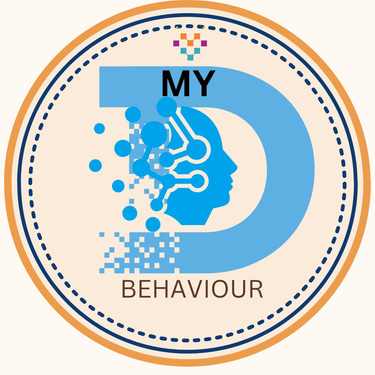Ask Yourself: Why Am I Online?
Digital Mindfulness Part 4
Gajanan L. Bhonde
8/5/20257 min read


The Digital Dilemma
In today’s hyper-connected world, the presence of digital technology is ubiquitous, effectively embedding itself in nearly every facet of our daily lives. From the moment we wake up to the sound of an alarm on our smartphones to the time we go to bed scrolling through social media feeds, our online habits have become increasingly pervasive and often automatic. The simple act of unlocking our phones, which many of us engage in multiple times a day, serves as an entry point into a seemingly endless loop of digital content. This phenomenon raises critical questions regarding the motivations behind our online actions.
In understanding the impulse that drives our engagement with digital platforms, we must consider the psychological underpinnings of our behaviors. Many users find themselves caught in a cycle of mindless scrolling, where content consumption becomes an involuntary response rather than a conscious choice. This tendency can often be attributed to the design of digital interfaces and algorithms that encourage instant gratification and continuous stimulation, leading to prolonged periods online without a clear purpose.
The tendency to engage with social media, news articles, or entertainment content without deliberate intent prompts reflection on the reasons we find ourselves in these digital spaces. Is it the allure of connection, the need for information, or the escape from reality? Understanding this digital dilemma requires a more profound inquiry into how our online behaviors impact our well-being, productivity, and social interactions. By critically examining our habits and motivations, we can begin to disentangle the complex relationship we have with technology, which ranges from beneficial to detrimental, depending on how consciously we engage with it.
The Impulse to Connect
In the digital age, the innate human desire for connection has found a new medium: social media. The powerful urge to interact with others, share experiences, and validate one's existence has significantly shaped our online behaviors. This impulse often stems from deep psychological factors, with two prominent influences being the craving for validation and the fear of missing out (FOMO).
At the core of our online engagement lies an inherent need for social acceptance. When individuals post content on social platforms, they frequently seek affirmation from their peers through likes, comments, and shares. This quest for validation serves not only to enhance self-esteem but also to foster a sense of belonging within a network. The immediate feedback provided by social media channels further amplifies this effect, encouraging users to continuously participate in the cycle of connection and reassurance.
Moreover, the fear of missing out, commonly referred to as FOMO, has become a significant psychological factor driving online activity. In a world characterized by the rapid dissemination of information and events, individuals often feel compelled to stay connected and informed. The prevalence of curated lifestyle content and highlight reels can lead to heightened feelings of inadequacy if one perceives themselves as disconnected or not participating in trending activities. This pressure can propel users toward more frequent online engagement, as they strive to stay in the loop and maintain social relevance.
Ultimately, our intrinsic need for social interaction is intricately linked to the ways we navigate online platforms. The act of connecting with others online not only caters to our psychological needs but also fosters a sense of community, even in a digital space. Balancing this impulse with mindful online habits can help individuals cultivate healthier relationships to their virtual interactions.
Habits and Dopamine Loops
In our increasingly connected world, understanding the formation of habits can provide significant insights into our online behaviors. Habits are behaviors that become automatic responses to certain cues in our environment. Over time, through repetition, these behaviors can develop into ingrained routines that require little conscious thought. This process can be largely attributed to the brain's reward system, where the neurotransmitter dopamine plays a critical role. When we engage in actions that yield rewarding outcomes, such as receiving notifications or likes on social media, our brain releases dopamine, reinforcing the action.
This biochemical reinforcement encourages us to repeat behaviors that have previously resulted in positive feedback, even if those actions do not serve a clear purpose. For example, checking one's smartphone in anticipation of a new message or update can lead to prolonged periods of screen time, which may result in disengagement from real-life interactions. The more we engage in these behaviors, the greater the likelihood that they will develop into habitual patterns, often occurring unconsciously.
Consequently, we may find ourselves reaching for our phones reflexively, not necessarily because we have a specific intention, but rather as a conditioned response. This behavior is compounded by the algorithmic design of many online platforms that thrive on keeping users engaged. Notifications are strategically deployed to trigger dopamine releases, making it increasingly challenging to resist frequent checking. The habitual nature of our online interactions highlights the importance of awareness regarding how these habits are forming, as understanding them can empower individuals to take control of their digital behaviors and mitigate unwanted screen time.
The Role of Digital Mindfulness
In an era where technology pervades every aspect of our lives, the concept of digital mindfulness has emerged as a crucial countermeasure to mindless scrolling and compulsive online behavior. Digital mindfulness encourages individuals to embrace a more conscious relationship with their technology, allowing them to engage with the digital world in a healthier, more focused manner. At its core, this practice fosters self-awareness surrounding our online habits, prompting us to reflect on our motivations for being connected.
With the plethora of digital distractions available today, it is easy to find ourselves aimlessly scrolling through social media feeds or consuming content without contemplating our intentions. Digital mindfulness raises awareness about these habits, urging individuals to consider questions such as "Why am I online?" and "What do I hope to gain from this interaction?" By addressing these inquiries, individuals can develop a greater understanding of their online behaviors and the impacts they may have on their mental well-being.
Moreover, practicing digital mindfulness can lead to a significant reduction in feelings of anxiety and stress that often accompany excessive online engagement. As users become more intentional about their technology use, they tend to cultivate deeper connections with others, as well as a more meaningful interaction with the content they consume. By establishing boundaries and prioritizing time spent online, individuals can take charge of their digital presence and create an environment that aligns with their personal values and goals.
In conclusion, embracing digital mindfulness not only enhances our awareness of our online actions but also promotes healthier interactions with technology. Through self-reflection and intentionality, we can transform our online experiences and, ultimately, find more satisfaction and fulfillment in our digital lives.
The Power of Self-Reflection
The question, "Why am I online?" serves as a significant cornerstone for self-reflection in our digitally dominated lives. In an era where digital engagement frequently overshadows face-to-face interactions, understanding the motivations behind our online presence can provide profound insights into our behaviors and choices. The various platforms we engage with—be it social media, forums, or professional networks—serve distinct purposes, but it is essential to evaluate the underlying reasons for our visits to these virtual spaces.
Consider a scenario in which an individual habitually scrolls through social media feeds. Reflecting on the question "Why am I online?" may reveal that this behavior is driven by different motivations: a desire for connection, boredom, or the need for validation. Identifying these motives enables a person to make informed decisions regarding their online consumption habits. This self-reflection not only clarifies personal intentions, but it also informs how one engages with online content—whether consuming passively or participating actively.
Moreover, in professional contexts, the inquiry into one's online activities could highlight motivations such as the pursuit of networking opportunities or gaining industry insight. Evaluating the effectiveness of such pursuits can lead to more strategic online engagement. For instance, if the primary purpose is to network, one might reconsider the time spent on platforms that do not facilitate valuable connections, opting instead for environments that foster professional growth and knowledge sharing.
In essence, the reflective question regarding our online presence illuminates our deeper motivations and aspirations. By engaging in this introspective process, we can better understand our relationship with the digital realm and make conscious choices about our online activities, fostering a more intentional and fulfilling online experience.
Balancing Online Engagement with Offline Life
In today’s digital age, the prevalence of online engagement necessitates a careful consideration of its impact on our offline lives. Many individuals find themselves increasingly drawn to virtual interactions, often overshadowing the value of in-person experiences. Achieving a harmonious balance between online and offline engagements is essential for fostering both mental well-being and genuine social connections.
One effective strategy for managing the interplay between online interactions and real-life activities is to set clear boundaries with technology. Designating specific times for checking emails or engaging on social media can prevent these activities from encroaching on personal time. For instance, employing techniques such as the Pomodoro technique or scheduled “digital detox” days can help create a mindful approach to online engagement. By being intentional about technology use, individuals can cultivate meaningful offline experiences without the distractions of constant connectivity.
Additionally, nurturing genuine real-world interactions offers an invaluable counterbalance to online life. Participating in community events, joining clubs or hobbies, or simply spending quality time with family and friends helps forge deeper relationships that are often lacking in digital exchanges. Fostering a sense of belonging through these interactions contributes to one’s emotional health, allowing individuals to thrive both online and offline.
It is also important to remain conscious of the reasons for our online presence. Understanding whether our engagement is for information, connection, entertainment, or validation can inform the way we allocate our time and resources. By recognizing the purpose behind our online activities, we can more effectively evaluate their impact on our overall lifestyle, thereby encouraging a healthier relationship with technology.
Ultimately, the digital landscape presents both opportunities and challenges. By acknowledging the necessity for balance and being proactive in setting boundaries, individuals can navigate their online engagement thoughtfully while cherishing the freedoms and joys of offline life.
Conclusion: Taking Control of Your Digital Life
As we navigate an increasingly complex digital landscape, it becomes essential to approach our online interactions with intentionality and self-awareness. By asking ourselves, “Why am I online?” we can gain valuable insights into our motivations for engaging with social media, content consumption, and other online activities. This self-reflective question serves as a powerful tool to help us understand not only our reasons for being online but also how these reasons impact our overall well-being.
Incorporating this question into our daily routines can encourage a more mindful use of technology. Being intentional about our digital engagements allows us to distinguish between genuine connections and the distractions that often consume our time. It enables us to consciously decide how to allocate our online time, whether it’s for entertainment, social connections, or professional development. As we become more aware of our motivations, we can make more informed choices about the platforms we engage with and the content we consume.
Additionally, cultivating a thoughtful approach to our digital lives can enhance our productivity and mental health. By reflecting on our online behavior, we can identify patterns that may hinder our goals and redefine our goals to align better with our true interests. This can lead to a reduction in stress and a greater sense of satisfaction derived from our online experiences.
Ultimately, taking control of our digital life requires a conscious, ongoing effort to engage with intention. As we deepen our understanding of our motivations behind being online, we pave the way toward a more fulfilling digital experience. This journey towards self-discovery and intentionality in the digital realm is crucial for fostering healthier relationships with technology and ensuring that our online activities serve our goals and values.
